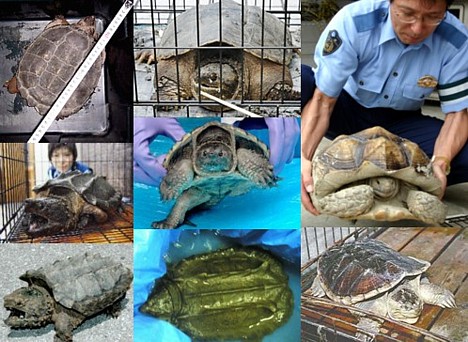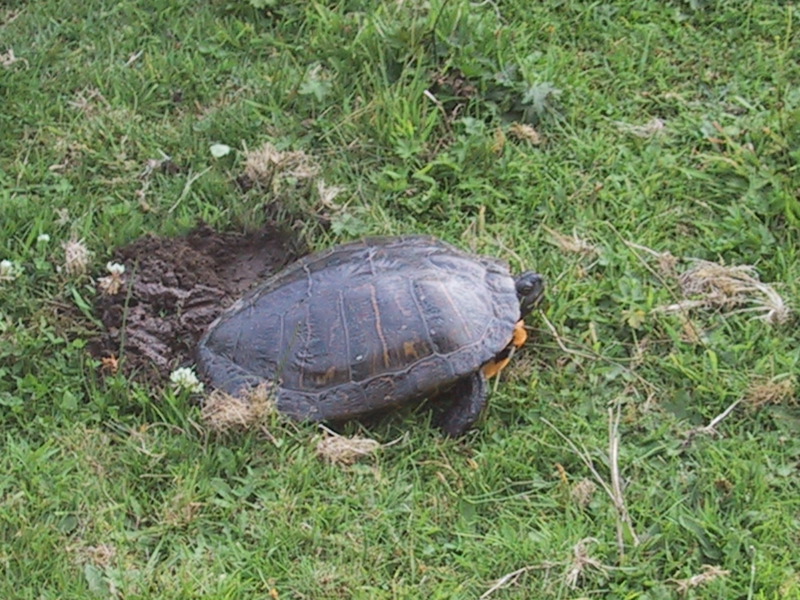|
||||||
|
Our cat brought this beautiful little bat into the house. It was completely motionless but it didn’t seem to have a mark on it. After we put it in a jar for a few minutes, the bat stopped playing dead and came ‘to.’ It looked like a tiny fuzzy devil, complete with a miniscule mouth that emitted a high-pitched stream of screeches, some beyond my range of hearing. After we thought it had fully recuperated, we took it back outside and released it. It scrabbled along the wooden railing of the deck for a few minutes and cocked its little head at us, to utter a few more inaudible vocalizations. Suddenly, it took flight and swooped over our heads, making one last little chattering sound before disappearing into the darkness. Was it cursing us? Was it thanking us? Or was it simply echo-locating its next meal? We’ll never know.

the children’s friend 
alien turtles The nightmare bombings of Hiroshima and Nagasaki, 61 years ago propagated themselves through post-war Japanese culture in some bizarre ways. The fire-breathing monster Godzilla, was an obvious metaphor for America’s clumsy and destructive atomic power and the original (1954) Godzilla film, (which I saw a couple of years ago at Film Forum), serves as an unambiguous and powerful indictment against nuclear weapons. Before releasing it in the US however, the American distributor, sanitized the film, removing the anti-H bomb sections, to make it more palatable to the haute cold war political climate of the time. Completely new scenes were added, in which Raymond Burr and a cast of American soldiers were spliced in, saving Japan from the runaway atomic monster.
The alien turtles Ian describes are likely red eared sliders (Trachemys scripta elegans), which Wikipedia notes are even beginning to colonize England. But the sliders are benign compared to what the folks over at Pink Tentacle are reporting. They claim that there are now so many stories about giant foreign turtles being found in Japan, that it seems the country is under a full-scale invasion. The most frightening species turning up are the outsized common snapping turtles (Chelydra serpentina) and their larger cousins, the alligator snapping turtle (Macroclemys temminckii). The latter can grow to an imposing 236 lbs. Both species are native to North America, but find their way to Japan as babies, in the pet trade. Once they grow to adult size, they are difficult to accommodate in the average Japanese apartment and so find themselves released into the waterways in droves. The resemblance between snapping turtles and Gamera is uncanny, although anyone mistaking one for “the children’s friend” might easily lose a finger. Up here in the rainforest, on the coast of British Columbia, I was surprised to come across a (mild-mannered) red eared slider busily excavating her nest in a cow pasture, next to the local lake. Native to the south-eastern U.S. this turtle was clearly a long way from home, yet over the past ten summers, I have glimpsed her, and what I think must be her mate, sunning themselves on half submerged logs. This photo documents the first close- up look of her, that I have ever had, and clearly identifyies her as a slider and not the potentially native Western painted turtle. As climate change continues to heat up our once coolish weather, it might one day even get warm enough for her eggs to hatch. In the meantime, she keeps trying. 
the slider |
||||||
|
Powered by WordPress · Atahualpa Theme by BytesForAll |
||||||


